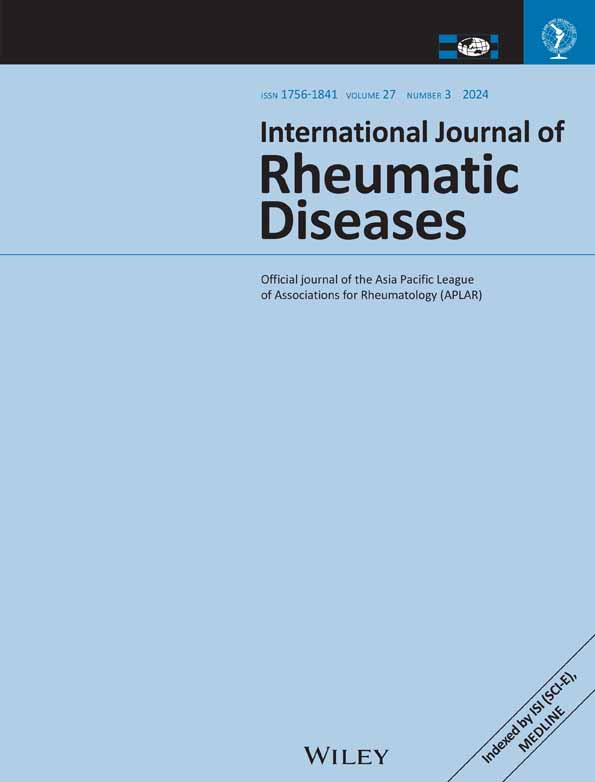Factors associated with acute anterior uveitis history in patients with axial spondyloarthritis: Results of a longitudinal study
Abstract
Backgrounds
Acute anterior uveitis (AAU) is the most common extra-musculoskeletal manifestation in axial spondyloarthritis (axSpA).
Objectives
The aim of the study is to evaluate the factors associated with AAU attacks in patients with axSpA during a 36-month follow-up period.
Methods
In total, 469 patients with axSpA were included in this observational study. Demographic data, clinical characteristics, disease activity measurements, and treatment patterns were compared between patients with and without a history of AAU. The development of AAU and its related factors were investigated using generalized estimating equations, which is a technique for longitudinal data analysis.
Results
Overall, 99 (21%) out of 469 patients experienced at least one AAU attack, with 77 patients (78%) having a history of AAU and 53 patients (58% of whom had a history of AAU) experiencing AAU attacks during the follow-up period. At baseline, patients with a history of AAU were found to be older (p = .001), be more likely to have peripheral arthritis (p < .001), have higher serum CRP levels (p = .016), have a higher frequency of sulfasalazine (SLZ) and tumor necrosis factor inhibitors (TNFi) use (p < .001 and p < .001, respectively). In the longitudinal analysis, having a history of AAU was identified as the only independent determinant of the development of AAU.
Conclusions
AAU history might be a risk factor for the development of AAU attacks in patients with axSpA. Although TNFi and SLZ were prescribed more frequently to patients with a history of AAU, the effectiveness of these agents in preventing further AAU attacks was not demonstrated.
CONFLICT OF INTEREST STATEMENT
The authors declare no conflict of interest.
Open Research
DATA AVAILABILITY STATEMENT
Data are available upon reasonable request by contacting the corresponding author.




